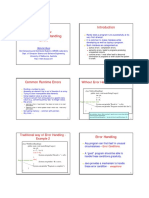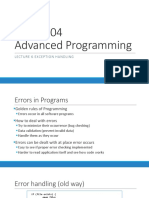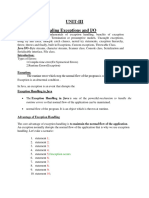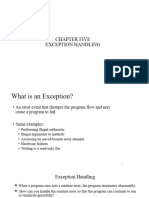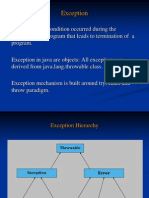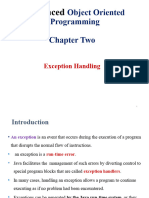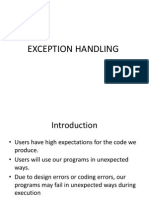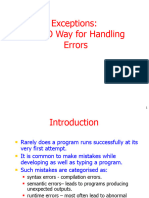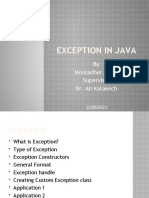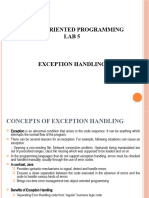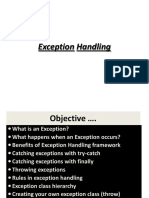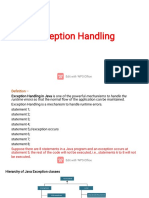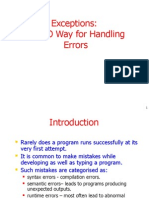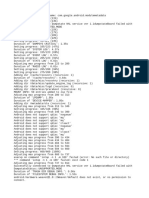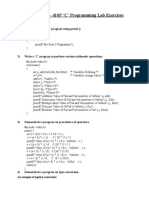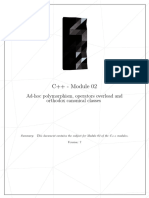0% found this document useful (0 votes)
45 views34 pagesException Handling
The document discusses exception handling in Java, emphasizing its importance for creating robust and fault-tolerant programs by separating error handling from the main code flow. It covers the basics of throwing and catching exceptions, the structure of try-catch blocks, and the use of custom exception classes. Additionally, it explains the significance of the finally block, the throws clause, and methods for debugging exceptions, such as printStackTrace and getMessage.
Uploaded by
Azthyn ZaxCopyright
© © All Rights Reserved
We take content rights seriously. If you suspect this is your content, claim it here.
Available Formats
Download as PDF, TXT or read online on Scribd
0% found this document useful (0 votes)
45 views34 pagesException Handling
The document discusses exception handling in Java, emphasizing its importance for creating robust and fault-tolerant programs by separating error handling from the main code flow. It covers the basics of throwing and catching exceptions, the structure of try-catch blocks, and the use of custom exception classes. Additionally, it explains the significance of the finally block, the throws clause, and methods for debugging exceptions, such as printStackTrace and getMessage.
Uploaded by
Azthyn ZaxCopyright
© © All Rights Reserved
We take content rights seriously. If you suspect this is your content, claim it here.
Available Formats
Download as PDF, TXT or read online on Scribd
/ 34








